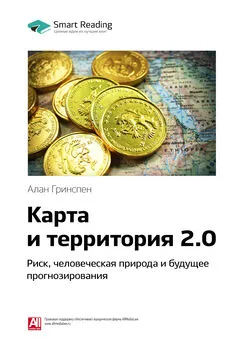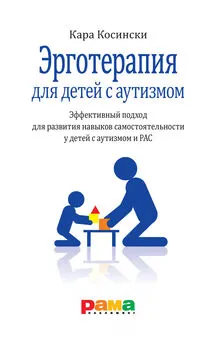Стенли Гринспен - На ты с аутизмом
- Название:На ты с аутизмом
- Автор:
- Жанр:
- Издательство:Теревинф
- Год:2013
- Город:Москва
- ISBN:978-5-4212-0148-9
- Рейтинг:
- Избранное:Добавить в избранное
-
Отзывы:
-
Ваша оценка:
Стенли Гринспен - На ты с аутизмом краткое содержание
В книге впервые на русском языке представлена распространенная система помощи детям с расстройствами аутистического спектра DIR/Floortime, разработанная профессором Стенли Гринспеном — одним из крупнейших в мире специалистов в этой области.
Методика успешно применяется в работе с детьми с самого раннего возраста, с подростками и взрослыми людьми. Для оценки достижений выделяются такие параметры, как эмоциональная теплота, способность строить отношения с людьми, способность к творческому мышлению и осмысленному общению. Занятия проводятся в атмосфере эмоционального контакта, в них участвуют не только специалисты, но и вся семья, и в результате навыки общения и мышления быстро входят в повседневную жизнь.
Книга адресована родственникам людей с расстройствами аутистического спектра, специалистам, работающим с ними, а также студентам — психологам, педагогам и др.
На ты с аутизмом - читать онлайн бесплатно ознакомительный отрывок
Интервал:
Закладка:
Greenspan, S. I. 1989. The development of the ego: Implications for personality theory, psychopathology, and the psychotherapeutic process. New York: International Universities Press.
Greenspan, S. I. 1992. Infancy and early childhood: The practice of clinical assessment and in tervention with emotional and developmental challenges. Madison, CT: International Universities Press.
Greenspan, S. I. 1997a. Developmentally based psychotherapy. Madison, CT: International Universities Press.
Greenspan, S. I. 1997b. The growth of the mind and the endangered origins of intelligence. Reading, MA: Addison Wesley Longman.
Greenspan, S. I. 2001.The Affect Diathesis Hypothesis: The role of emotions in the core deficit in autism and the development of intelligence and social skills. Journal of Developmental and Learning Disorders 5:1–45.
Greenspan, S. I. 2004. Greenspan Social-Emotional Growth Chart. Bulverde, TX: Psychological Corporation.
Greenspan, S. I., and C. Breinbauer. 2005. Short-term changes in emotional, social, and intellectual functioning in children with ASD with the DJR-Floottime approach. Working paper.
Greenspan, S. I., G. A. DeGangi, and S. Wieder. 2001. The functional emotional assessment scale (FEAS) for infancy and early childhood: Clinical & research applications. Bethesda, ML): ICDL (www. icdl.com).
Greenspan, S. I., and S. Shanker. 2004. The first idea: How symbols, language and intelligence evolved from our primate ancestors to modern humans. Cambridge, MA: Perseus Books.
Greenspan, S. I., and S. Shanker. 2006.The developmental pathways leading to pattern-recognition, joint attention, language and cognition. New Ideas in Psychology, February.
Greenspan, S. I., and S. Wieder. 1997.Developmental patterns and outcomes in infants and children with disorders in relating and communicating: A chart review of 200 cases of children with autistic spectrum diagnoses Journal of Developmental and Learning Disorders 1:87–141.
Greenspan, S. I., and S. Wieder. 1998. The child with special needs: Encouraging intellectual and emotional growth. Cambridge, MA: Perseus Books.
Greenspan, S. I., and S. Wieder. 1999.A functional developmental approach to autism spectrum disorders. Journal of the Association for Persons with Severe Handicaps (JASH) 24:147–161.
Greenspan, S. I., and S. Wieder. 2005. Can Children with Autism Master the Core Deficits and Become Empathetic, Creative, and Reflective?
A Ten to Fifteen Year Follow-up of a Subgroup of Children with Autism Spectrum Disorders (ASD) Who Received a Comprehensive Developmental, Individual-Difference, Relationship-Based (DIR) Approach. The Journal of Developmental and Learning Disorders 9.
Greenspan, S. I., S. Wieder, A. Lieberman, R. Nover, R. Lourie, and M. Robinson.1987. Infants in multirisk families: Case studies in preventative intervention. Clinical Infant Reports. New York: International Universities Press.
Herbert, M. R., D. A. Ziegler, N. Makris, P. A. Filipek, T. L. Kemper, J. J. Normandin, H. A. Sanders, D. N. Kennedy, and V. S. Caviness Jr.2004. Localization of white matter volume increase in autism and developmental language disorder. Annals of Neurology 55:530–540.
ICDL-DMIC Diagnostic Classification Task Force. 2005. Interdisciplinary Council on Developmental and Learning Disorders Diagnostic manual for in-fancyand early childhood mental health disorders, developmental disorders regulatory-sensory processing disorders, language disorders, and learning challenges. Bethesda, MD: ICDL (www.icdl.com).
Interdisciplinary Council on Developmental and Learning Disorders Clinical Practice Guidelines Workgroup, SIGC. 2000. Interdisciplinary Council on Developmental and Learning Disorders’ clinical practice guidelines: Redefining the standards of care for infants, children, and families with special needs. Bethesda, MI): ICDL (www.icdl.com).
Just, М. A., V. L. Cherkassky, T. A. Keller, and N. J. Minshew. 2004.Cortical activation and synchronization during sentence comprehension in high-functioning autism: Evidence of underconnectivity. Brain 127:1811–1821.
Klin, A., F. R. Volkmar, and S. Sparrow. 1992.Autistic social dysfunction: Some limitations of the theory of mind hypothesis. Journal of Child Psychology and Psychiatry 33:861–876.
Koegel, J. К., S. M. Camarata, M. Valdez-Menchaca, and R. I. Koegel.1998. Setting generalization of question-asking by children with autism. American Journal of Metal Retardation 102:346–357.
Lovaas, О. I.1987. Behavioral treatment and normal educational and intellectual functioning in young autistic children. Journal of Consulting and Clinical Psychology 55:3–9.
Mahoney, G., and F. Perales.2005. Relationship-focused early intervention with children with pervasive developmental disorders and other disabilities: A comparative study. Developmental and Behavioral Pediatrics 26(2):77–85.
McEachin, J. J., T. Smith, and О. I. Lovaas. 1993.Long-term outcome for children with autism who received early intensive behavioral treatment. American Journal on Mental Retardation 97:359–372.
McGee, G. C., P. J. Krantz, and L. E. McClannahan. 1985.The facilitative effects of incidental teaching on preposition use by autistic children. Journal of Applied Behavior Analysis 18:17–31.
Minshew, N., and G. Goldstein. 1998.Autism as a disorder of complex information processing. Mental Retardation and Developmental Disabilities 4:129–236.
Mundy, P., M. Sigman, and C. Kasari. 1990.A longitudinal study of joint attention and language development in autistic children. Journal of Autism and Developmental Disorders 20:115–128.
National Academy of Sciences, Committee on Educational Interventions for Children with Autism, NRC. 2001. Educating Children with Autism. Washington, DC: National Academies Press.
Ozonoff, S.1997. Causal mechanisms of autism: Unifying perspectives from an information-processing framework. In D.
Cohen and F. Volkmar,eds., Handbook of autism and pervasive developmental disorders, pp. 868–879. New York: Wiley.
Pennington, J., and S. Ozonoff.1996. Executive functions and developmental psychopathology. Journal of Child Psychology and Psychiatry 37:51–87.
Rogers, S., and D. DiLalla.1991. A comparative study of the effects of a developmentally based instructional model on young children with autism and young children with other disorders of behavior and development. Topics in Early Childhood Special Education 11:29–47.
Rogers, S. J., T. Hall, D. Osaki, J. Reaven, and J. Herbison.2000. The Denver model: A comprehensive, integrated educational approach to young children with autism and their families. In J. S. Handleman and S. L. Harris, eds., Preschool education programs for children with autism, 2nd ed, pp. 95–133. Austin, TX: Pro-Ed.
Shea, V.2004. A perspective on the research literature related to early intensive behavioral intervention (Lovaas) for young children with autism. Autism 8:349–367.
Siller, М., and M. Sigman.2002. The behaviors of parents of children with autism predict the subsequent development of their children’s communication. Journal of Autism and Developmental Disorders 32:77–89.
Simpson, G. A., L. Colpe, and S. I. Greenspan.2003. Measuring functional developmental delay in infants and young children: Prevalence rates from the NH1S-D. Paediatric & Perinatal Epidemiology 17:68–80.
Smith, T.2001. Discrete trial ABA approaches. In New approaches to help the most challenged children learn to communicate and talk. Tysons Corner, VA: ICDL.
Smith, Т., A. D. Groen, and J. W. Wynn.2000. Randomized trial of intensive early intervention for children with pervasive developmental disorder. American Journal of Mental Retardation 105:269–285.
Solomon, R., J. Necheles, D. Ferch, and D. Bruckman.In press. Program evaluation of a pilot parent training program for young children with autism: The PLAY Project Home Consultation Program. Autism.
Sperry, R. W.1985. Consciousness, personal identity, and the divided brain. In F. Benson and E. Zaidel, eds., The dual brain, pp. 11–27. New York: Guilford.
Spitz, R.1965. The first year of life: A psychoanalytic study of normal and deviant development of object relations. New York: International Universities Press.
Teitelbaum, P., and O. Teitelbaum.1999. Motor indicators o f autism in the first year. Paper presented at the Interdisciplinary Council on Developmental and Learning Disorders’ Third Annual International Conference on Autism and Disorders of Relating and Communicating. McLean, VA.
Tronick, E. Z. 1989.Emotions and emotional communication in infants. American Psychologist 44:115–123.
Vargas, D. L., C. Nascimbene, C. Krishnan, A. W. Zimmerman, and C. A. Pardo.2005. Neuroglial activation and neuroinflammation in the brain of patients with autism. Annals of Neurology 57(1):67–81.
Wetherby, A. М., and В. M. Prizant.1993. Profiling communication and symbolic abilities in young children. Journal of Childhood Communication Disorders 15:23–32.
Об авторах
Стенли И. Гринспен (1941–2010), доктор медицинских наук (M. D.) — один из крупнейших в мире специалистов и области изучения и коррекции аутизма. С. Гринспен был профессором психиатрии и педиатрии в Медицинской Школе Университета им. Джорджа Вашингтона, председателем Междисциплинарного совета по нарушениям развития и обучения. Он также был основателем и президентом центра помощи детям раннего возраста с особыми потребностями и их семьям «От нуля до трех», директором Научного центра психического здоровья по разработке клинических программ развития для детей на базе Национального института психического здоровья (NIMH). Доктор Гринспен был признанным авторитетом в сфере клинической работы с детьми раннего и дошкольного возраста, имеющими когнитивные и эмоциональные нарушения развития. Под его руководством и по его модели были созданы многие региональные проекты и сети взаимодействия специалистов. Д-р Гринспен удостоен высшей награды Американской Психиатрической ассоциации за исследования в области психиатрии; он является автором около сорока книг, переведенных более чем на двенадцать языков; его статьи печатались в ведущих СМИ по всему миру. О деятельности Гринспена сделано несколько телевизионных передач и снят документальный фильм. Сайт о деятельности д-ра Гринспена: www.stanleygreenspan.com.
Читать дальшеИнтервал:
Закладка:








